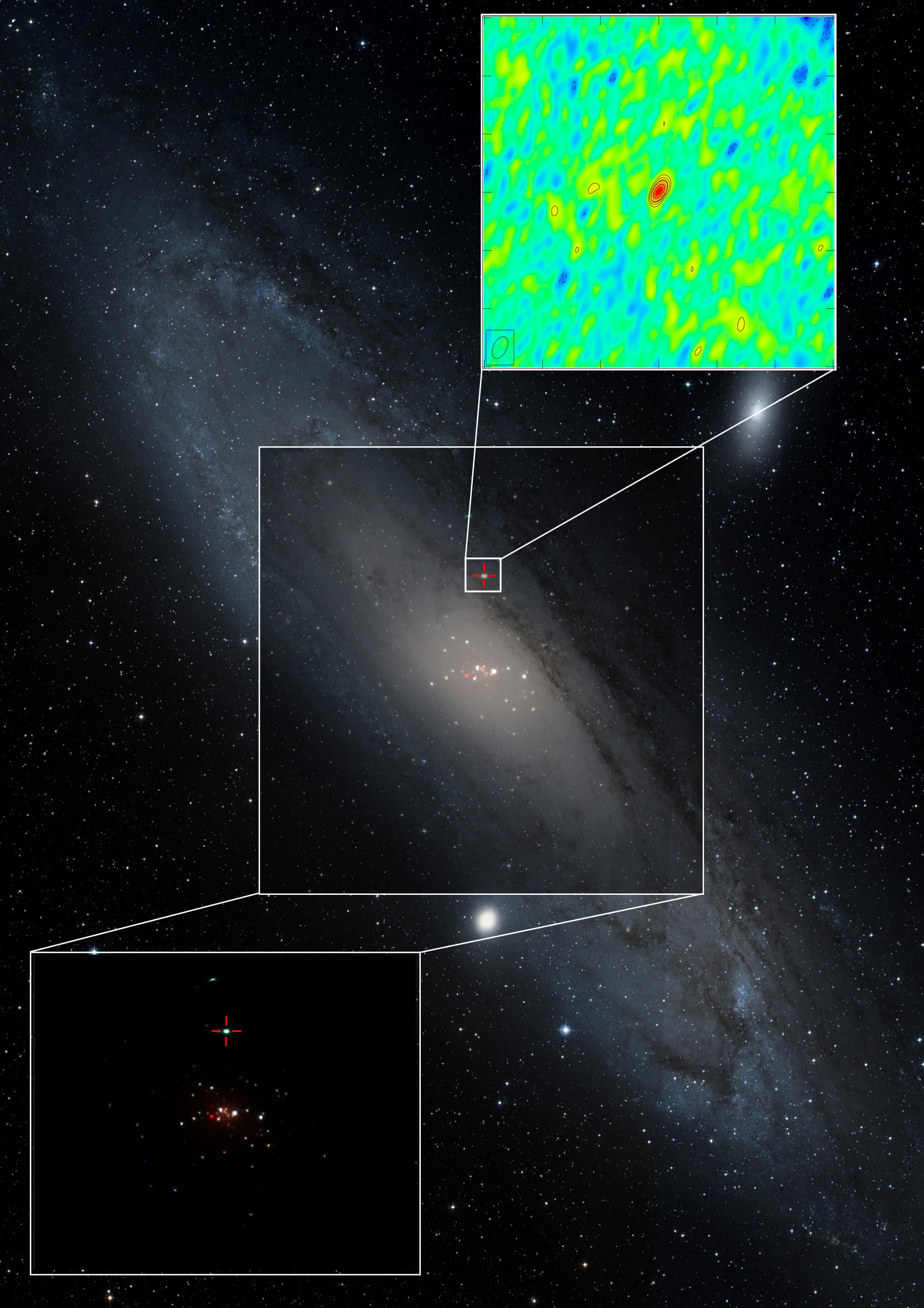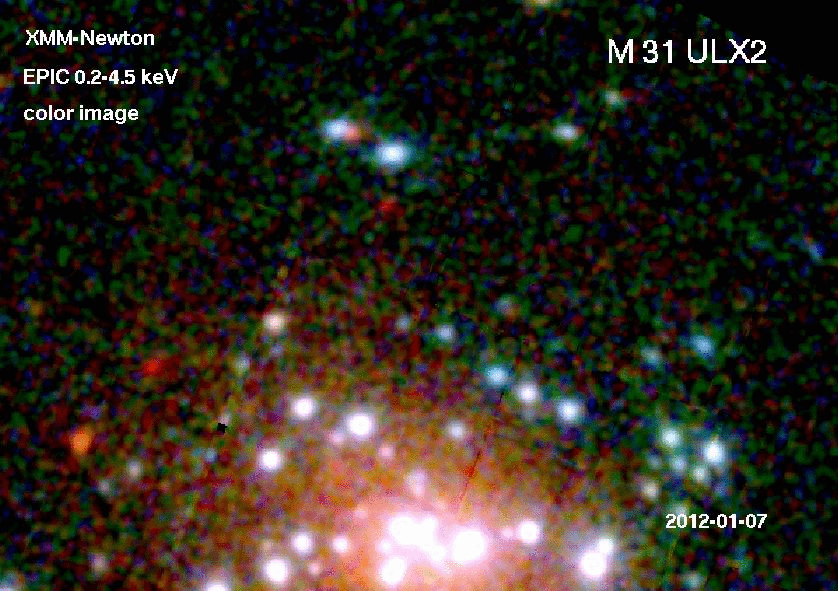Using a suite of Earth-orbiting X-ray telescopes, including NASA’s Swift and the European Space Agency’s XMM-Newton satellites, a large international team of astronomers watched as the X-ray emission from the black hole – found over 2million light years away – brightened and faded over the course of six months.
The study, published in the prestigious scientific journal Nature, also shows what happens when black holes feast rapidly on the material stripped from a companion star.
It is the second Ultraluminous X-Ray source (ULX) to have been spotted in Andromeda – the Milky Way’s nearest neighboring galaxy – in the past two years.
X-ray telescopes have shown many nearby galaxies to host ULX sources, which can be bright enough to outshine an entire galaxy in X-rays.
Astronomers have spent years debating whether these are black holes just a few times the mass of the Sun which are gorging themselves on gas from an orbiting star, or whether they are more massive black holes eating more sedately.
Lead author Dr Matthew Middleton, who led the latest research while at Durham University, said the findings helped solve this debate.
Dr Middleton, now based at the University of Amsterdam, said: “The black hole we observed in Andromeda is the missing link.
“Our observations tell us that this ultraluminous X-ray source – and by extension, many others – is just a run-of-the-mill black hole, only about ten times the mass of the Sun, that is swallowing material as fast as it can.”
Dr Middleton added: “We watched a black hole go from nibbling daintily at an appetiser to bingeing on the main course, and then gradually slowing down over dessert.”
Black holes in our own Milky Way galaxy are very rarely seen to binge, but when they do, they also launch very powerful beams of material called jets, which are blasted outwards at close to the speed of light, and can be tracked using sensitive radio telescopes.
The team trained the National Science Foundation’s Karl G. Jansky Very Large Array on the black hole, and saw extremely bright radio emission that dropped by a half in just 30 minutes.
“Discovering these radio waves from an ultraluminous X-ray source is the smoking gun, a dead giveaway that these are just normal, everyday black holes,” said co-author Dr James Miller-Jones, of the Curtin University node of the International Centre for Radio Astronomy Research in Perth, Australia.
“This tells us that the region producing radio waves is extremely small in size, no further across than the distance between Jupiter and the Sun.”
This finding was confirmed by zooming in using the world’s most eagle-eyed radio telescope, the Very Long Baseline Array.
This was the first time that radio jets had been detected from a stellar-mass black hole outside our own Milky Way galaxy.
Despite the large distance to Andromeda, the absence of dust and gas in that direction allows an unhindered view of the feast, giving scientists key new insights into how jets are produced by a binging black hole.
Co-author Dr Natasha Hurley-Walker, also from the Curtin University node of the International Centre for Radio Astronomy Research, said: “We were very lucky that this ULX appeared in our local neighbourhood; its proximity meant that we could make these radio observations and demonstrate that the black hole emitting the X-rays is fairly small.”
ICRAR is a joint venture between Curtin University and The University of Western Australia providing research excellence in the field of radio astronomy.
Original Publication:
Bright radio emission from an ultraluminous stellar-mass microquasar in M31, by Middleton, MJ, et al is published in Nature. DOI: 10.1038/nature11697
Contacts:
Dr James Miller-Jones
ICRAR, Curtin University
Ph: +61 8 6488 7771
E: james.miller-jones@icrar.org
Dr Natasha Hurley-Walker
ICRAR, Curtin University
Ph: +61 8 9266 9178
E: nhw@icrar.org
Kirsten Gottschalk
Media Contact, ICRAR
Ph: +61 8 6488 7771
M: +61 438 361 876
E: kirsten.gottschalk@icrar.org
Megan Meates
Media Contact, Curtin University
Ph: +61 8 9266 4241
M: +61 401 103 755
E: megan.meates@curtin.edu.au
Images and Animation:

A composite image of our neighbouring galaxy, Andromeda, showing different views of the Ultraluminous X-ray (ULX) source. The background image is an optical (visible) light picture of Andromeda, with the X-ray image (bottom left) taken with the Earth-orbiting XMM-Newton X-ray telescope superimposed. Colours in the X-ray image correspond to different X-ray energies, with red being least energetic and blue being most energetic. The ULX is indicated by the cross-hairs. At the top right is the radio image of the black hole taken with the Very Long Baseline Array radio telescope, showing that the radio emission was coming from an extremely small region of space, and leading the team to infer that the extraordinary amount of X-ray emission they observed was produced by a relatively modest-sized black hole. Image Credit: X-rays: ESA/M. Middleton et al., Radio: NRAO/M. Middleton et al., Optical: Aladin/STScI DSS.


